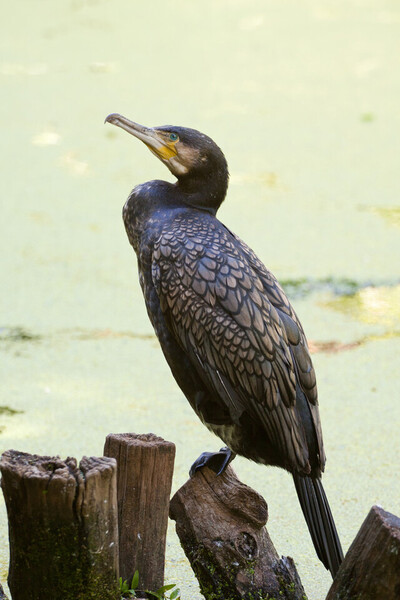
Pelicans (Genus Overview)
Pelecanus (genus)
Pelicans (Pelecanus, family Pelecanidae) are very large waterbirds with an e···

Crested Goshawk
Accipiter trivirgatus
Crested Goshawk (Accipiter trivirgatus) is a medium forest raptor across tro···

Chilean Flamingo
Phoenicopterus chilensis
Chilean Flamingo (Phoenicopterus chilensis) is a large South American wader ···

Kiwi (Genus Overview)
Apteryx (genus)
Kiwi (genus Apteryx) are nocturnal, terrestrial birds endemic to New Zealand···

Kākāpō
Strigops habroptilus
Kākāpō (Strigops habroptilus) is New Zealand’s flightless, nocturnal par···

Macaroni Penguin
Eudyptes chrysolophus
Macaroni penguin (Eudyptes chrysolophus) is a large crested penguin distingu···

Zebra Finch
Taeniopygia guttata
Zebra finch (Taeniopygia guttata) is one of Australia’s most widespread sma···

Fiordland penguin
Eudyptes pachyrhynchus
I. Species OverviewThe yellow-browed penguin, a member of the genus Eudyptes···

Peafowl
Pavo, Yue bird, Nanke, Kongjue, Kong bird
In zoological classification, peacocks belong to the class Aves, order Galli···

Biue-Winged Pitta
Pitta nympha,Fairy Pitta
Fairy Pitta (scientific name: Pitta nympha), also known as Pitta, is a speci···

Cockatiels
IntroductionCockatiels are one of the most popular pet birds out there, and ···

Great crested grebe (Podiceps cristatus)
Table of ContentsPhysical CharacteristicsHabitat and EnvironmentBehavior, Li···

Pelicans
Table of ContentsPhysical CharacteristicsHabitat and EnvironmentBehavior, Li···

Great Blue Heron (Ardea herodias)
Ardea herodias
Species Scientific ClassificationThe Great Blue Heron (Ardea herodias) is cl···

Fratercula cirrhata(Tufted puffin)
tufted puffin,Toporok,Fratercula cirrhata,crested puffin
Table of ContentsIntroduction to Tufted PuffinsPhysical FeaturesSize and Wei···

Harpy Eagle
When you think of powerful, majestic creatures of the sky, the harpy eagle c···

Dromaius novaehollandiae
Emu,Dromaius ater, Dromaius novaehollandiae rothschild,Australian ostrich, Ostrich australis,cassowary
Emu (scientific name: Dromaius novaehollandiae, pronounced the same as "···

Anhinga melanogaster
Darter,Snake Bird
The Black-bellied Snake Darter (scientific name: Anhinga melanogaster, forei···

Microcarbo pygmaeus
Microcarbo pygmaeus,Pygmy Cormorant
The Pygmy Cormorant (Microcarbo pygmeus) is a seabird of the family Cormorid···

Phalacrocorax capillatus
Phalacrocorax capillatus,Temminck et Schlegal,Japanese Cormorant
The dark green-backed cormorant (Phalacrocorax capillatus, Temminck et Schle···

Phalacrocorax carbo
Great Cormorant,Black Shag,Cormorant,White-breasted Cormorant,Heron, river cormorant, water crow, osprey, 鷧 (pronunciation meaning), black ghost, black fish man
The cormorant (scientific name: Phalacrocorax carbo), also known as heron, r···
